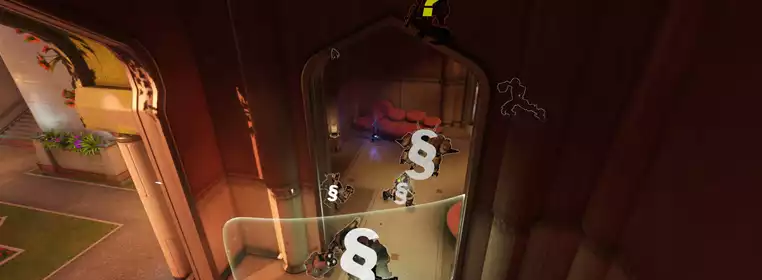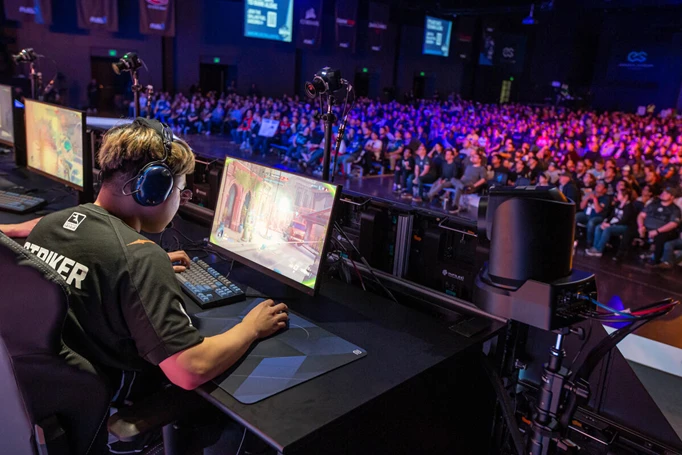Was Striker's Boost Allowed? - Staffers On The Confusion Around The OWL Rules

The whistle blows and the referee raises their arm to indicate a foul play. As the audience audibly fights over the subjectivity of the decision, play continues altered by the decision of a few.
The above doesn’t happen a lot in esports. For the most part, whether or not something was permissible or not is decided by gameplay engines, most often judging consistently amongst competitors with few exceptions. Only occasionally during extraordinary circumstances is human judgement required to decide what is fair and what isn’t.
Of course, not everything is so easily decided by algorithms. If a team significantly delays a game start, it is upon the referee to make a call in accordance with the rules of competition that have been laid out prior to the game. In the rarest of cases, the judgment call has to be made about gameplay-related issues. After all, the vast majority of plays that are possible to do within the engine are permitted, with exceptions of obvious bug abuses that hurt competitive integrity being the outlier. When a certain line within the rules is crossed, the referee steps in and stops the action, serves adequate punishment, and facilitates a solution that allows play to commence.
Often in video games, the possibilities are so complex and the field so unexplored that occasionally we run into edge cases where it isn’t so clearly black and white, but rather a grey area of what goes and what doesn’t. In cases with precedent of prior behaviour, it will be taken into account.
So when Nam-joo "Striker" Kwon manned the upper arch in his team’s game against the Houston Outlaws at a close match score in which every fight counts, having being boosted up there by a Mei wall, a lot of staff in the Overwatch League weren’t sure if what they were seeing was actually a permissible play. To jump to the conclusion, GGRecon has reached out to the Overwatch League and has confirmed that Striker’s play is permitted, though no clear reason as to why was given.
An issue of clarity and consistency
When the question was asked if the play should be allowed, fans understandably had a protective reaction to the tactic. After all, the use of this position created a very hype play that resulted in a huge shatter in a thrilling moment of potentially one of the best games of the season. One could argue that ideally, you would want your rules to be crafted in a way in which these plays are clearly allowed and thus encouraged.
An anonymous source in a front-office position at an Overwatch League team shared that based on precedent from past seasons, they were almost certain that it wasn’t allowed, citing prior instances in which teams had been told that for instance the Junkertown Point A ledge on which Widowmakers liked to position had been deemed off-limits.
Indeed, Blizzard themselves had declared doorway ledges and their boost using Mei’s Ice Wall as bugs before in their patch notes.
Fixed a bug that allowed Mei's Ice Wall to reach unintended locations
Fixed a bug that allowed players to stand on a doorway ledge
- Overwatch Patch Notes, April 10, 2018
Extrapolating from those signals, how could a manager or coach in the Overwatch League be sure that their players were okay to use a boosted position such as Striker used against the Outlaws?
Indeed, there doesn’t seem to be much certainty. In an anonymous survey of ten Overwatch League team officials at the management or coaching level, GGRecon asked, if given their past experiences and their interpretation of the rules and precedents, they thought the play was going to be allowed.
“Given my past experience, no, it is not permissible,” said a member of management in an Overwatch League team who wishes to remain anonymous, citing prior rule violations the League office had warned teams for in prior seasons.
Most commonly, respondents answered that they had employed a strategy of doing first and asking for forgiveness from the League later, citing that no actual fines or penalties had been issued for positional inflictions in the Overwatch League to their knowledge and that only warnings had been given. “Notably Fissure in S1 used them when he got transferred to Gladiators multiple times on Hanamura and didn't get punished” another participant of the survey responded.
“I think it's a bit of a grey zone with certain spots on the map. I think some are more obvious than others. Ultimately up to the developers to fix the bug spots in my opinion or the league to clearly communicate what's off-limits, such as the Junkertown spot.” a third respondent weighed in.

 Click to enlarge
Click to enlargeA wider issue
With the Striker’s boost generally being considered above board, with most respondents thinking that either no action would and should come from it or that the play was going to be permitted, a larger issue materialised in the implications of the situation.
GGRecon asked to rate how sure the participants were when judging which map position was going to be permitted by the League from a score of 1 to 10, with one marking lowest possible certainty and 10 as the highest. The average turned out to be 4.1, with the median sitting at 5 out of 10 points. Map positions in Overwatch League remain largely an unsolved puzzle with pre-supposed forgiveness from its rule-makers.
With no clear definition cited in the rules and seemingly decided on a case by case basis that appears to not consider precedent strongly, some OWL team staffers have shared that they’ve started going to the League first to clear spots before the team uses them.
Furthermore, GGRecon asked respondents how certain they are that they would be able to advise their teams on the full content of Overwatch League’s rulebook and which actions were permissible or forbidden given the information they had received from the League. While higher, an average of 5.8 points out of 10 didn’t inspire confidence in that either the Overwatch League rules had a clear delineation or that professionals having to work under those rules had been sufficiently educated on them.
Overwatch League’s relatively laissez-faire approach has, so far, at least publicly, not produced any major points of disagreement when it comes to League-wide rule interpretations. Most team professionals showed themselves sympathetic to the difficulty of creating a rigorous though flexible and fair ruleset given the complexity and ever-changing nature of the game, though wished to receive more focused information to advise their team in the best possible way.
Images via Blizzard Entertainment